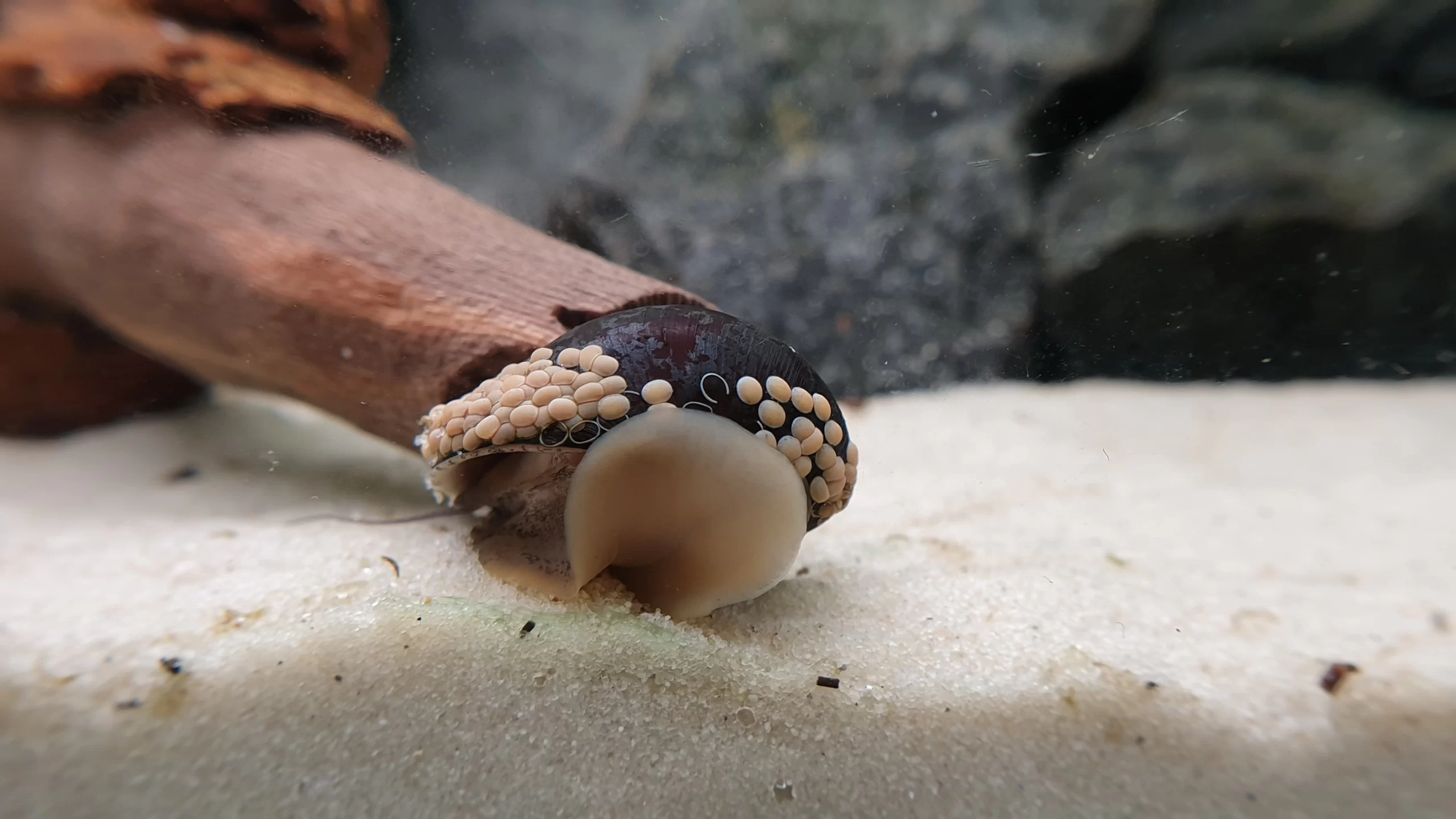

Nerite snails (Neritina)
The nerite snails are among the most popular and at the same time uncomplicated snail species at all. With their beautiful patterns and eye-catching colors, they bring a bit of color to any aquarium. In addition to the visual aspect, nerite snails are also very helpful to a tank. They help to combat algae growth. They do this by grazing on fixtures, plants, and even the aquarium itself throughout the day.
Water parameters for nerite snails
- PH value: 6.2 – 7.8
- GH (total hardness): 3° – 30° dGH
- KH (carbonate hardness): 3° – 30° dKH
- Temperature: 19° – 30°C
Appearance
The classic nerite snail, which probably everyone knows, is monochrome and black. However, there are many different patterns and also colors in these animals. Known appearance with these snails are black-yellow striped specimens or also orange animals with black-yellow points over the entire housing distributed. Additionally there are also red animals with a black pattern over the shell. With proper husbandry and sufficient food, nerite snails can grow up to 3 cm.
Breeding
A breeding or a reproduction in a normal freshwater aquarium is not possible. Therefore, this snail is especially suitable for aquarium owners who do not want reproduction. However, nerite snails still lay eggs in aquariums, which are often not easy to remove. The larva, which normally develops from an egg, needs brackish or seawater to survive. Thus, breeding is only possible in a seawater aquarium with appropriate salinity.
Keeping nerite snails
Keeping in the aquarium of these animals is undemanding. A 30l tank is already enough to put a nerite snail. Ideal is the attitude with shrimp, because this snail does not attack. However, before you buy and put this animal, there should be enough food. Thus, in new aquariums should wait for enough algae to form, so that the animal does not starve. In addition, there should be a cover over the aquarium, because nerite snails often leave the water. A cover will prevent the animals from not finding their way back and drying out.